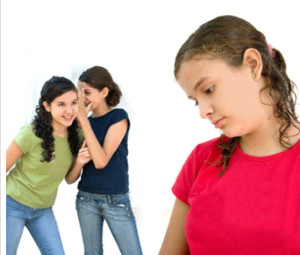Bullying has been in the news a lot more recently, but what is it exactly ?
Bullying is unwanted, usually unprovoked, aggressive behavior amongst school age children. It most commonly occurs where there is an imbalance of power and popularity. The bullying behavior can include name calling, rumors, threats, allegations, physically pushing, shoving, punching, slapping or otherwise attacking another, or excluding one from the group or activities. These behaviors are usually repeated against the same individual time after time, either in person or by cyber efforts i.e. text, tweets, emails, facebook, blogs, IM.
The risk factors for being the target of bullies are multitude and varied but include several of the following things:
1) children that are new to their school
2) children that cannot afford the things and activities of the other children
3) children that are overweight or underweight
4) children that have disabilities – either mental or physical
5) children that are depressed
6) children that are introverts
7) children that wear glasses, braces or have other physically different characteristics
8) children with a different sexual orientation
9) children of a different racial orientation
Even if a child has these risk factors it certainly does not mean that he or she will be bullied,
but they are risk factors that parents need to be mindful of. It is also very important that parents ensure that their children are not bullys and don’t condone actions of bullies that they may witness. The best way to ensure this is to have open lines of communication with your children and make sure they know how to report bullying immediately. Parents need to explain to their children the drastic effects bullying can have, and that children need to stand up for their peers when they see bullying occur.
It is important for parents to know and be watchful of warning signs that their child might be the target of bullies. Children often don’t ask for help and parents have to know when to step in. Signs that your child might be the target of a bully include:
1) isolation
2) failing grades
3) not wanting to go to school or the location where the bulling is occurring
4) change in habits of eating, sleeping, bed wetting, moods
5) self destructive behavior: cutting oneself, running away from home, suicidal thoughts, talk
or attempts
6) anger towards others or pets
7) lost or destroyed clothing, toys, money
8) unexplained physical injuries
Children learn from adults’ actions. If adults treat each other with respect and kindness, the
children witnessing this know there is no place for bullying and will more likely stand up for
themselves and others. Help Stop Bullying !


